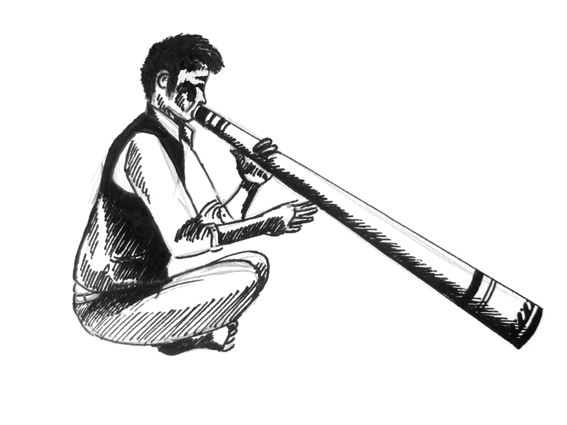
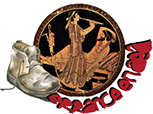

Intervention of Irène Chalki
Cy ScarabAeus
Art and language – defense and encouragement of a multilingual theatre in Europe
Preliminary.
I have been invited to speak about and attest among others of my experience of the multilingualism, as applied to a theatre experimental work. The defense of the multilingualism relies both on theoretical and practical bases. As a linguist, I could elaborate a relevant philosophy, but as a theatre director I would focus upon artistic multilingual performances.
My first practical experience is related to the foundation in 1984, in Brussels, of the Theatre Workshop of the European Institutions (Atelier Théâtral des Institutions Européennes) (abbreviated as ATIE). The target was to create a European theatre company, exempt from any linguistic barriers, and develop training multilingual practices, research artistic work and perform in as much as possible European languages using the original version of the written plays.
The impact of the creation of this experimental multilingual European theatre group has been so important that in one year the number of its members grew to 130 individuals, all of them speaking more than two European languages and being eager to share multilingual theatre experience, even if the original language of a play was unknown to them. The first theatre productions (Elektra de Hugo von Hoffmanstahl, Le Roi se meurt d’Eugène Ionesco, Aggiungi un posto a tavola di Garinei e Giovannini, Yerma de Federico Garcia Lorca, La patente and L’uomo dal fiore in bocca di Luigi Pirandello), have been respectively unilingual (in French, Greek and Italian most of the time), although the cast was linguistically diversified. Then we realized a more ambitious experience with the production of the project LES DON JUAN, in 1990, based on 11 linguistically different versions and plays written about the Don Juan myth in Europe. The final “montage” included texts in five European languages (FR, ES, IT, EN, DE) and 16 actors playing each one alternatively in three or four different languages. This experience took us about two years artistic research work and resulted into a tremendous 5 hours’theatrical saga that, for practical reasons, we limited finally to a 3 hours’ performance. After Les Don Juan production that has been presented both in Brussels (Espace Delvaux Theatre) and in Luxembourg (Théâtre Municipal d’Esch-sur-Alzette), we have undertaken another multilingual project, GOOD OLD EUROPE, created in 1992 with the actors of the Theatre Workshop of the European Institutions and presented a year later, in October 1993, as the opening emblematic show in the newly founded Scarabaeus’ Théâtre. This production confirmed our theory that multilingualism applied to theatrical and artistic work could generate interesting and innovating cultural events and develop between the participants very rich exchanges on human and professional level (cf. Presse release about this performance).
Extract No 1. – « Good Old Europe »- Un voyage théâtral douze étoiles
Les douze petites étoiles européennes sont cette fois à l’ origine d’un spectacle poético-théâtral, « Good Old Europe ». En 1990 le centre culturel du Brabant wallon lance un concours d’écriture centré sur le thème : « Mon pays, région d’Europe ». Venus de huit pays de la Communauté, les textes retenus pour une publication sont signes par Danine Abse, Sophie Bronsin, Gillian Clom, Janine Dehut, Patrick Devaux, Hans Dieter, Françoise Lison, Christopher Pilling, Ferhad Skakely, A.E. Tilman et Chris Burkesroda.
Chacun évoque, à sa manière, les charmes de sa région, les légendes qui y fourmillent ou les inquiétudes que suscitent les offenses de l’homme à la Nature. Aujourd’hui, ces douze textes prennent corps sur scène dans “Good Old Europe’, à travers un fil conducteur, la découverte de notre continent par un jeune Américain émerveillé.
Extract No 2. – « Good Old Europe »- Voyage dans notre bonne vieille Europe
Les douze textes lauréats du concours « Lettres d’Europe » ont été adaptés au théâtre, et articulés autour du thème du voyage.
Morcelés, les textes ont été restructurés autour de sourires, de regards, de paroles, de parfums d’Europe apportés par chacun des écrivains et des acteurs, qui viennent de Belgique, d’Italie, de Grèce, du Danemark et des Pays-Bas. Le défi était de garder l’intégrité des textes, de trouver comment transcrire sur scène les sources d’inspiration des écrivains, sans les trahir.
Extract No 3. – « Good Old Europe » - Une mosaϊque d’expressions culturelles
Accepter la différence… polyphonique
« C’est sur base de ces textes que j’ai adapté le spectacle’, nous explique Irène Chalkia, metteur en scène au sein de l’Atelier Théâtral des Institutions européennes. « Les textes ont gardé leur intégralité, mais ont perdu de leur individualité. Ils parlent d’un monde en mouvance, qui se forme et se déforme pour atteindre momentanément la complicité d’une vie en commun, d’un monde qui accepte la différence de l’autre. Cette différence, nous l’avons nous-mêmes vécue, puisque les 9 acteurs sont belges, italiens, grecs, danois ou néerlandais. Le tout baigné par une musique originale d’Armando Carrère. »
(… ) pour toucher au plus près la poésie de chaque écriture, le spectacle fera appel â une multitude de voix, de langages corporels et visuels. « L’Europe est un vieux continent avec ses civilisations, et ses cultures multiples, variées, une véritable mosaïque. Ce spectacle, c’est l’intégration et l’harmonisation de la diversité entre pays, peuples et cultures dans une Europe polyphonique. C’est aussi essayer d’aller au-delà de l’aspect photographique de cette vieille Europe.
Extract No 4. – « Good Old Europe » - ou la création d’un spectacle pas comme les autres
Prenez des textes en poésie, ou en prose. Sélectionnez les meilleurs de ces textes, après un concours. Ajoutez beaucoup d’audace, pour en faire une adaptation théâtrale. N’oubliez pas les parfums européens, pour leurs goûts et les senteurs, les sensibilités qu’ils apportent. Saupoudrez le tout du talent d’un metteur en scène, Irène Chalkia, qui apporte une petite touche grecque à l’affaire. Vérifiez l’assaisonnement. Goûtez avec délectation le talent des comédiens. Et vous assisterez au spectacle “Good Old Europe’. Un spectacle vraiment pas comme les autres.
In 1992, the Maastricht European Treaty consecrated officially the importance of the cultural and linguistic diversity as a major factor and a prevailing character of the European identity (citation Traité de Maastricht) . . .
Art and language
Art is a universal language. The strength of the “verb” (speech) results from its confrontation to the “gestus”, that is the basis of the human behaviour in his current actions while he is operating in order to preserve his life.
Art is a super linguistic link that offers a bridge between ethnic consciousnesses and reassures individuals about their belonging or their social integration to a community.
Language is associated with the cultural identity of the human beings. It brings a shield of individual security in the frame of an extended community, where socio-cultural diversities might be the origin (the starting point/ the stimulus) for any mutual exchange of experience, but could also generate great fears to be separated and left aside from the prevailing social structures.
The cohabitation of animals and trees in natural forests and biotopes is successfully managed and the balance of the ecosystem is naturally maintained. Man, although he is intelligent, or even because he is intelligent, manages to disturb this natural balance in such a terrific way that now he should study again to find the way and the specific programs in order to recover the previous environmental balance.
Many languages happened to be the natural language or the hereditary linguistic idiom of a people who uses it as a means of communication. This fact is an important cultural heritage that no Esperanto or Europanto (*) or any other artificially constructed language could substitute it, for globalization reasons.
The globalization strategies all over the world caused the upraise of collective and individual consciousness, people questioning themselves about their ethnic appartenance.
The Babel paradigm in Mesopotamia could be considered as the first historical attempt of linguistic globalization. Certainly it’s a long way back to history, but it is worth while reconsidering some details of this biblical story (Genesis 11, 4)
After the Great Flood (Deluge), Noah survived for 350 years. He died at the age of 950 years old. His sons repopulated the earth giving birth to the genitors of all nations expanded (spread over) the earth.
The Babel Tower
The whole earth was of one language, and of one speech. And it came to pass, as they journeyed from the east, that they found a plain in the land of Šin'âr, and they dwelt there. And they said one to another, "Come, let us make bricks and burn them thoroughly." And they had brick for stone, and slime had they for mortar. And they said, "Come, let us build us a city and a tower whose top may reach unto heaven; and let us make us a name, lest we be scattered abroad upon the face of the whole earth."
And the Lord came down to see the city and the tower which the children of men built. And the Lord said, "Behold, the people are one and they have all one language, and this they begin to do; and now nothing will be withheld from them which they have imagined to do. Come, let Us go down, and there confound their language, that they may not understand one another's speech." So the Lord scattered them abroad from thence upon the face of all the earth; and they left off building the city.
Therefore is the name of it called Bâbel (that is "Confusion") because the Lord did there confound the language of all the earth; and from thence did the Lord scatter them abroad upon the face of all the earth.
[Genesis 11.1-9;
transl. King James 21st Century]
Despite the biblical assertion, I think that the word Babel or Babylon should be connected to the archaic value of the letter B (Bet) that means initially “house”, so it might prevail the idea of constructing a unique big house, the tower, in a sole city. Of course the letter B is a labial and so it is naturally related to the mouth and the first human attempt to articulate sounds and words, hence related to a “confused” kind of language.
In order to exist, THEATRE asks man to engage himself thoroughly, including main parts of his biological, physical, intellectual, psychological and spiritual existence/life.
Theatre exists in a community through a territorial, social and political environment that is sufficiently defined and recognized to form a kind of community (family, group of friends, inhabitants of a village, town, region or a capital city) and operates in a determined space that has been selected on that purpose: a circle delimited on the ground surface, a wooden stage, a theatre building room, an amphitheatre in the open air, a street, a church, a schoolyard, a market or ceremony place.
The instruments for the theatre communication are various: the speech, the body and gestures, the mime, the dance and movement, the song and music. Nowadays photo and video images are added as means to support theatre expression, in order to suggest, to restrict or widen, to guide or manipulate the spectators’ imagination.
Language(words), signs and images are the usual means of theatre transmission; they operate by structuring, dividing and restructuring their components in order to create new interfaces of perception and communication, in which individual or collective emotions and projections could be integrated and make sense for the audience, through a procedure of recognition, acceptance or denial. Participation goes/leads beyond the expression of his own feelings and judgments for a modern audience. Action and reaction is often required (cf. Augusto Boal’s Forum theatre and the Theatre of the Oppressed) .
Why the Babel project failed? 4000 years later, we can always ask this question, because it seems to me relevant at many points of view. It would be very simple to say because this project didn’t match God’s will, and so, close definitely any discussion on this legendary matter. Nevertheless, there are some points to consider in the Babel project.
The Babel Tower was founded on an utopia: one unique language, in one unique territory for all the people of the earth to gather and stay together under the unique authority of a God, which they intended to approach as much as possible, according to the highest level of the Tower’s top (cf. the Ziggurat building model in Babylon).
Then the project to concentrate in one city all the human power in terms of energy and number of individuals and to create a homogeneous society aborted. The lesson to take from that story is, at the opposite of this mythical pattern, to adopt multilingualism and to encourage liberty of expression and free circulation of people and individuals over the world in order to develop appropriate linguistic and cultural exchanges, to prevent the confusion that resulted from the precipitated scattering of people after the failure of the Babel project.
Modern capital cities in Europe, like Brussels nowadays, or New York in the USA, present very often aspects of this chaotic post-Babel situation, because so many languages and cultures try to cohabitate in the same territory without socially and politically accepted common rules. Excess of freedom of expression and no recognition of the mutual rights and limits on a certain territory generate very often patterns of mutual fear and civic isolation on ethnic level. Both, for security reasons, bring the individuals to gather themselves in linguistic and cultural ghettos.
Theatre as an artistic and cultural expression is situated in the crossroad of various disciplines (to mention among others the dance and movement, the mime, the music and song), some of which do not necessarily use language as a means of expression, transmission and communication. Traditionally theatre is associated with the power of verb (speech) which has been the major instrument for literary appropriation and transmission of theatre plays and poetry. Most of the plays are translated in different languages, so no linguistic barriers could be an obstacle to the literary and artistic exchanges.
The Multilingual Theatre, what for?
What is the challenge of such a choice?
What are the difficulties implied in the concomitant use of many languages in the same theatre performance, and additionally to other means of theatre expression?
What is the result compared to the challenge and the target set up for this practice?
Any art, and theatre in particular, takes in account the artist’s identity, his national and cultural identity, his physical and psychological identity (=particular modes of expression and behavior), his linguistic identity(=mother language and level of knowledge and capacity to work in other languages on stage and off stage). Communication and exchange for artists is equally important on and off stage. The quality of understanding depends not only on the intelligence (naturally possessed or acquired by training) of a person and on the degree of mastership and comprehension of different languages as means for communication. It depends also on the understanding of the symbols and images, and the sociological and cultural references that are appropriate to each country and culture, and even more, to each community we have the feeling to belong.
When this understanding is insufficient, direct communication fails and substitution means should operate (=translation, interpretation, projection of approximative and similar scenarios). The exchange of information is achieved, nevertheless, with this help, but what might be lost, is the primary energy and the original vibration that is enclosed in the electromagnetic environment of a language images and expressions.
Certainly we can create all the plays (in prose or in poetry) all over the world using only the translations of the original texts. Translations are very useful for the spread out and the comprehension of literary inheritance. A good translation would help actors and the audience to follow the plot and understand the relation between the characters of a play.
But it should be important at least for the director to be able to read the original text of the play he puts on. Otherwise the performance would miss some creative energy that is enclosed (included) in the original text of the play and that is not transmissible through any translation, should it be the best.
The target of the multilingualism applied to the theatre production could be defined as follows:
Confirm the willingness to recognize, accept and welcome with no conditions the culture of others; promote a quality exchange based on criteria of equal opportunities for all languages and cultures, without any a priori subjugation to the official language of the hostess country. It really happens that one who has the rule upon another, makes use of his right to impose his proper language as a means of communication, and sometimes, according to the political status (regime), he might prohibit the use of any traditional or local language spoken by the populations under his rule.
In our practice, we encountered, from the beginning of the experience, among the members of the workshop, the desire for freedom of expression and the difficulty to share ideas or spiritual benefits, because of the use of certain language. The theatre proposes
a common target of creation, oriented to the community, and manages to overcome the linguistic obstacles and settle a bridge in place of frontiers, using several means of expression (gestures, mime, voice and song, learning in situ of some other language).
The result is to open men’s consciousnesses to a European diversified cultural identity, and to give all artists equal opportunities of creation without any linguistic barriers.
Language remains, with no contest, an instrument – alike the gestus and any other artistic means – but, subordinated to the imagination, becomes the main instrument of expression and communication.
This practice allows the theatre of words (cf. the texts of the great Classics) to become a theatre of images and body emotions. We encourage the tolerance and the sharing of the common European heritage; regional or national individual accents are not discriminated as polluting elements of one another’s language.
Language is important for the communication and the transmission of information. It contributes to the knowledge and the exchange. But what kind of relationship would be created between human beings through this exchange?
‘The language is a source of misunderstanding’ asserts with wisdom the Fox in the Little Prince proposing to the young boy a ritual of taming one another in order to become friends :
"I can't play with you," said the fox. "I'm not tame."
(Le Petit Prince, by Antoine de Saint-Exupéry)
The fox reveals in its secret a new way of communication by the heart intelligence:
'One sees clearly only with the heart. What is essential is invisible to the eyes.’
The communication will not be based any more on the language (exchange of words), but on the consciousness of the alliance between man and animal, on the consideration of the links that create the heart intelligence: to accept to be tamed is a mark of mutual confidence and attests a status of good exchange and relationship.
The Little Prince has been one of my favorite theatre projects that I directed three times, every time with a new cast including actors of different countries and languages, and once with the students of the German School of Brussels (Deutsche Schule Brussels).
The language considered as an instrument of liberation. Man’s social memory – that could be also qualified as operating memory (as it is the leader in man’s responsible acts and relations in society) - is dominated by the language that carries images. In theatre
practice we often inverse the procedure and we propose a theatre of images that could function/ operate in a selective mode at the level of the individual memory or on that of a target group which we name public or audience. Theatre today has merged at several points with dance and the audiovisual, borrowing to these sectors technical features and tools of expression and communication. Should we say that the verb and the gesture, that have always been its proper language, lost their importance? Should this fact be the consequence of the difficulty to respond, in the professional milieu, to the demand for a multilingual theatre that could travel easily from one country to another, with an international passport, likewise the dance, music and cinema productions which offer also the possibility of dubbing the films according the country of destination/distribution.
Theatre, although hesitating, resists on the systematic dubbing procedure. But the fact to consider it as a mercantile product/good, in equal purchase conditions than the films of cinema and television (which are massively distributed with the DVD supports), change considerably its objectives and finalities. It is not the meeting between human beings and cultures that prevails, but the possibility to access to knowledge, even virtually and indirectly, a knowledge without emotion and experience of life, a kind of super-printed image of the body and essence of the theatre act.
It would probably seem that I am not in favour of translation and dubbing or subtitling of the plays they are presented to a larger audience, although myself used to be a translator and worked in the translation department of the European Communities for 21 years. In fact, it is a paradox and I do defend, from several points of view, the multilingualism in the theatre creative work.
If we desire that theatre remains a live art in our society, we should give it the possibility to be constantly nourished by the different spoken languages and by the people to whom it is addressed everyday; the tradition and culture inherited by each ethnic group or individuals influence the way of reception and interaction between humans, on the social and artistic level. Theatre reflects not only knowledge and technical requirements but the real cultural vibration of the plays and their producers. Its “renouveau” depends highly on those three factors.
Language is a vehicle of energy that we cannot always manage without taking some risks. We have to accept our grey areas and master the fears that the language of the other that we do not understand might generate in our conscious and subconscious intelligence. This inner acceptance and open-mindedness is the sign of a degree of wisdom and heart intelligence, maybe superior to that advised by the Fox in the Little Prince.
Let’s look at the future with confidence and make every human MEETING or REUNION a joyful event to experience it fully, hic and nunc, with our body, spirit and soul together, without forgetting the lessons of past and history – as transmitted by our languages, because they are part of our common universal cultural heritage, should it be diversified.
Everybody all over the world keeps in himself memories of joys and sufferings related to moments and humans that constructed or destroyed a part of the planet Earth in which we live. Become conscious of the richness and the diversity of this inheritance might help us to liberate ourselves from fears of one another and allow developing a peaceful and balanced collaboration.
Theatre act should remain a MEETING, on biological, artistic, esthetic and cultural level, relying on the heart’s intelligence, and not only on spiritual basis; it should be a magnificent experience to share, in place and time where it is agreeable for humans to be together.
Thank you!
Irene Chalkia
Brussels (Belgium) – Capestang (France), June 2011
social ARTISTRY NETWORK
SOCIAL ArtISTRY NETWORK



aRT & LANGAge
1- Irène Chalkia, Cy Sacarabaeus
2- Joana Bartholomew, Cy Lynx
3- Maril Van den Broeke, Cy Pas'sage
4- Catherine Tournafol, ITEP & for the Promotion of all the Talents

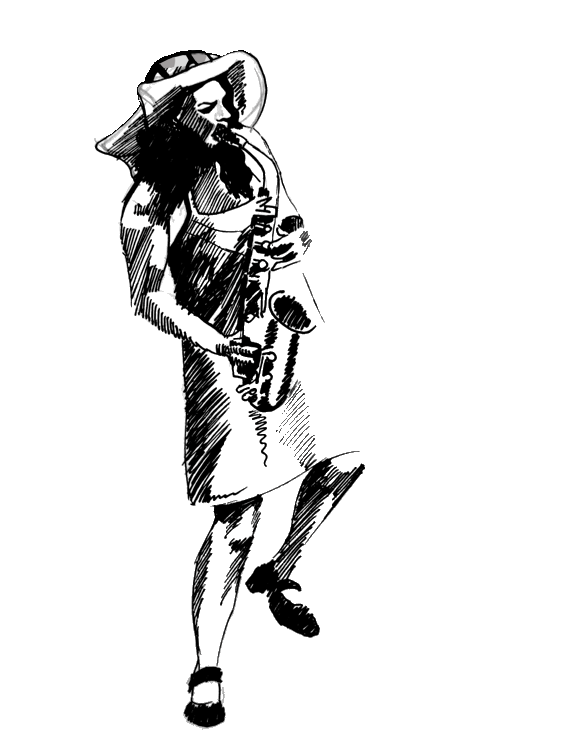
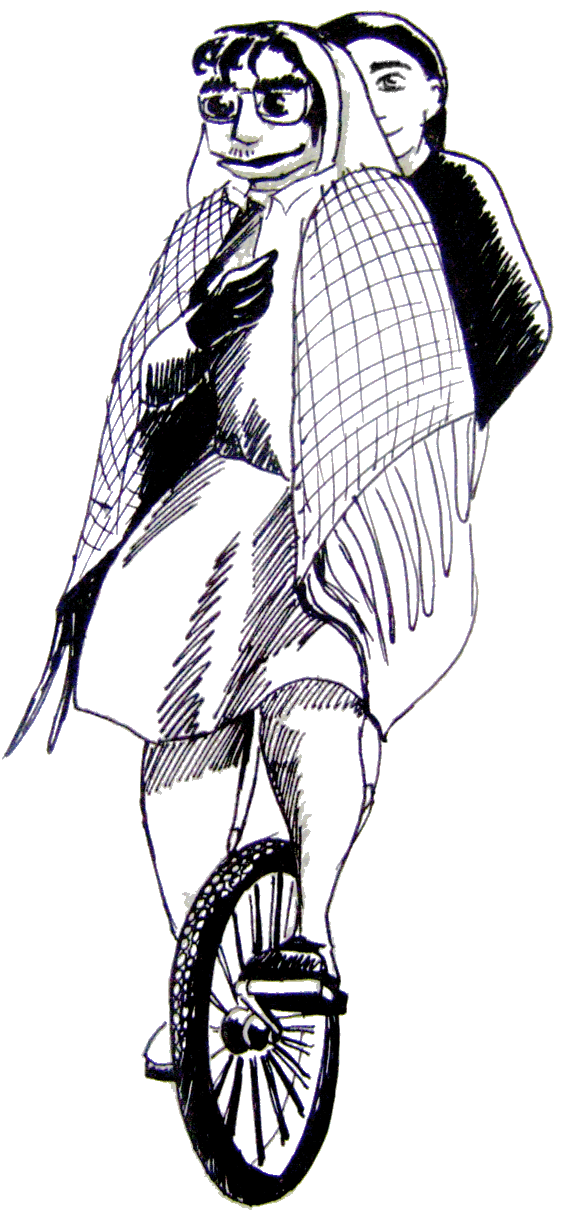

Intervention of Joanna Bartolomew,
company Lynx :
Good afternoon, I am Bartholomew, from the company Lynx and our main activity fits with the question of today "art and language" because we work on the theatre in English, for people who are not english, and multilingual theatre that is something that we are starting to explore. THe bilingual and multilingual theatre. The company gets an approach of visual arts and theatre, so we work with actors and we also organise trainings in english.
(photos) here, we were working with people on extracts by Pinter, mixed to sketches written with the trainees.
Here, it was a training for stewardesses, whose majority who never had gone to the theatre, never had played and followed the course. We wrote some plays adapted to their language level, around topics which interested them, and answered to a professional need, and allowed them to get another position in their work (often with humor). In this language lesson, that could last one week to 3 weeks for short terms courses, or long terms ones, we could write a play and played it then in front of other trainees, at the end of the course. There were aroung 40 or 50 people and we finished with a collective dinner. During those trainings, most of the time, trainees were unemployed people, young students preparing an exam, or people in a specialised training. We organised a long time project with trainees from a formation to be security agents. The public often was multicultural, so after the show, we gathered around the diner with meals from various cultural origines. The actors, even if they feared to frent the public, were very satisfied in 90% of the cases, after the show. With the security agents, we worked on concrete cases of lost children in the airport that land up in a suitcase.
Here is a group of young students who drawed this poster. Here the stewardesses.
I made this work during 9 years. Then, I wanted to spend more time playing theatre and I offered training courses of Theatre in Englidh for professionals. I started to create multilinguistic shows and little by little, I had some proposals of multilingual courses. I followed the approach of language, learning and a way to share languages, repeat, listen in order to start, language A and language B, so that the personn B can talk the language A with a direct transmission between participants. It is a way to work that I discovered and experimented with Hendi DEGAIN, who worked on this way to share languages. I use this method and I go further with a bilingual show in French and Arabic. I directed poetries from a Syrian poet, Samoa El Nalbi, a woman who wrote on her condition of woman. She is known for her book "the proof by honey" which talks about women erotism, regarding the arabic world of the 12th and 13th centuries. Those poetries talks about several moments of her life and of her desires. The show is created from the text : "my ancestors, the murderers". ( "mes ancêtres les assassins".)
We created this show last spring with Latifa a moroccan colleague who worked on litteral and poetric arabic, just before the Jasmin Revolution of Tunisia.We were working on it in a moroccan library whose owner is a very politically engaged man. It was very exciting to be in my neighbourhood, which is a mixed ethnic cultural neighbourhood, to get those excahges with Latifa. Together, we are preparing a workshop of multilingual theatre for youngsters of the Education Without Boundaries Network. We are starting a new very exciting experience.
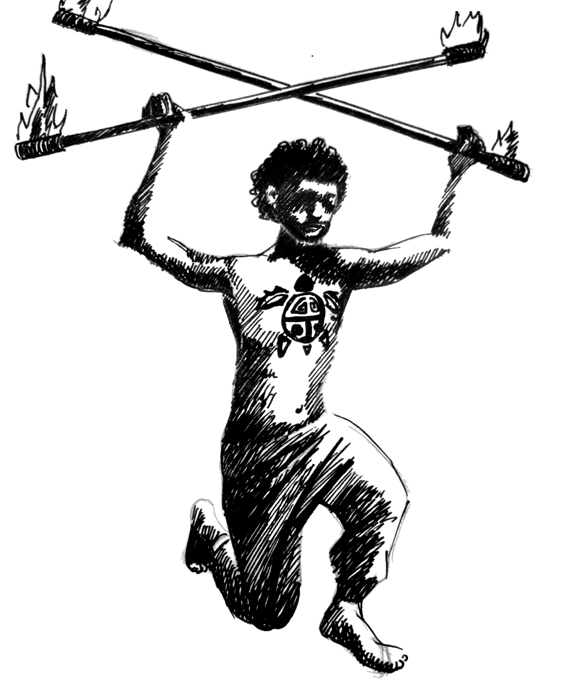
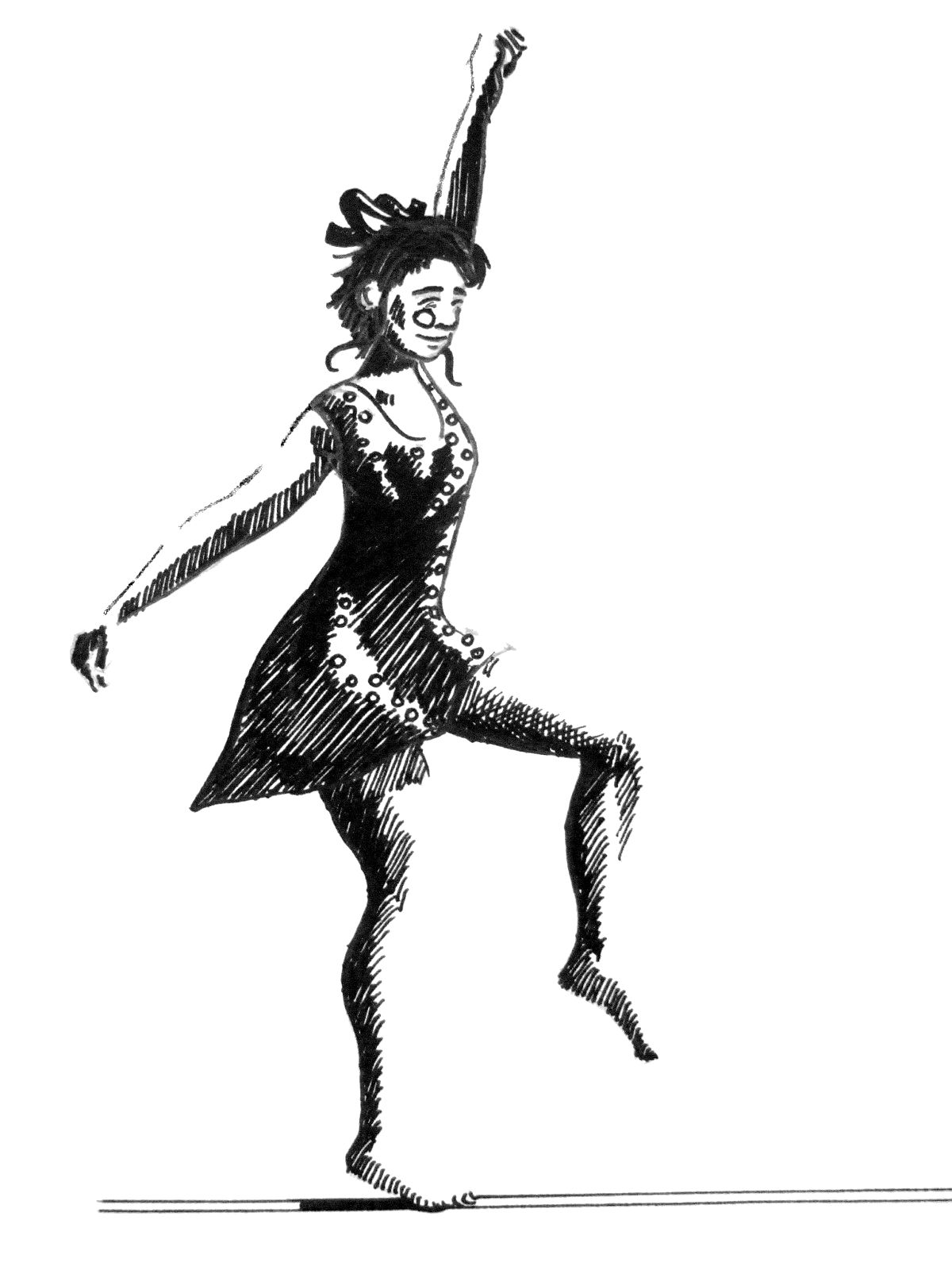
Intervention of Catherine Tournafol,
ITEP - for the promotion of all the talents :
Art & handicap
Intervention of Catherine Tournafol, Art and handicap :
I am a social worker in an ITEP, an educative, pedagogical and therapeutic institute which hosts children and teenagers who have character and behaviour troubles. Beside of it, I am president of an association called "place for the promotion of every talents" and we work on the creation of a regional resource centre around the topic of art and handicap. The purpose is to make a panorama of experiences around the accessibility of the handicapped people to the culture and artistic practices. I propose you to examine this notion of accessibility.
For me, question oneself is giving attention to recognize, not to smooth differences, but to give the right to live one's difference and recognize diversity as a fundamental value. The access to culture is applicable to everybody, as mentioned in the constitution, and in the UN declaration. In 2003 we lived the year of handicap. In France in 2005 we enacted a law called the law of February the 11th of 2005, which treats about the equality of rights and chances, and about the citizen participation of handicapped people. This law talks about a global access to culture : "all the handicapped people has a right to access to the solidarity of the whole nation and to guarantees like the access to fundamental rights (as to other citizens). 6 years after the promulgation of this law, what happened with the access to culture and artistic practices for handicapped people? What is interesting in this law is the definition it gives to handicap. "Handicap means all the limits to activity or restriction to participation to the social life suffered in one's environment by a person because of the substantial, sustainable or definitive impairment of one or several physical, sensitive, mental, kinesiological or psychic functions, of a poly-handicap, or even of an intermittent health troubles." This law doesn't give an intrinsic definition of the handicap, but put it in touch with environment. From there, many social involvements appear. In France, we count around 12 millions of handicapped persons. The visual handicap represents 1,7 millions of people, the auditive one more than 5 millions; motor handicapped people are 2,3 millions; intellectual are 700 thousands (difficulties for learning, language, mental delays). Regarding ageing we get 1 million old people who gather several handicaps. 7 millions of people are using psychoactive drugs and one French people on 2 will be handicapped once in his life. In the region Languedoc-Roussillon, more than 6000 families get a handicap benefit for their child. 1338 medical or social organisations host those children. For adults, more than 40000 persons receive a handicap grant. 80 professional organisations receive professional training courses. 168 hosting organisations and 31 caring services manage handicapped people in their social life.
Access to culture for handicapped people is an applicable right for all the cultural structures and must go further than the individual initiative. We notice that accessibility is more important in the field of cultural buildings, but this forgets other kinds of services, as information, transportation, physical, mental or financial means. Everything is linked.
The cultural offer is never totally accessible. We can talk of good practices which have allowed to strentgh all public hosting. When I talk of "all public" I am also talking of people who often go to shows but won't be more able to tomorrow because of evolving diseases. Cultural accessibility means that several organisations work together : cultural, social, medical, associative organisations and institutions. They will all together create a chain of cultural accessibility. If one member of this chain is missing, the handicapped person will be deprived of his cultural practice. It is necessary that everybody work together.
In France, the main institution has been the Conseil général (local level) since the decentralisation. It is in charge of the sectors of solidarity and handicap. Since the law of 2005, they created a grant of compensation. We evaluate the level of handicap and according to this, the person may get benefits, financial, material, or technical help. this help can be used for accessing to culture. But a few people know this law and use it.
Other experience, the creation of a tourist label on handicap that allows the structures who want it to be involved in an assessment diagnostic and advices on accessibility. In France, every organisation that receives public will have to be accessible before 2015. Those places are not all adapted today and some of them panik. Some will ask for special dispensations, but some places will have to close.
Many associations work on the representation of handicapped people. Their difficulty in the field of culture is to work with coherence with all the other associations who work each one on its own issue. We notice tensions between the worlds of culture and handicap. Offers (shows, specialised equipment, special prices...) don't make the request grows. A huge public doesn't get access to art. Handicapped people, as culture consumers have been forgotten for a long time, and very few initiatives have been taken. Some structures have fit out places for those people. Museums are accessible, and manage specific actions (workshops...). But if we take the example of music schools in our Region, they say they don't get any request from handicapped people, so they are not concerned by this question. Excepted for the music school of Perpignan which has specific actions for deaf people, there are very few actions. The fine arts school in Montpellier will host his first handicapped pupil in 2011.
Regarding this topic, I am interested to know what happens abroad.
Many places are not accessible but what we observe is that there is no will to think about another pedagogical form. However, in France, we get an artistic education charter that talks about the adaptation of Culture and education regarding social inequalities.
In the associative field, there are many initiatives that allow people to play theatre, music... it is an active sector, but not much visible. there are no place of information on the offer. People who don't know where to go, don't get access to it. Only the word of mouth works. What can we do to make the situation change? Adapt and strengthen communication. the more we get access to information, the more we get access to rights. The information on accessibility is quite rare on communication tools in cultural organisations. This lack of information creates a gap between people from the cultural area and handicapped people who go to places which are not adapted and who bore with it, little by little.
Many people don't dare going out because of this lack of information. On the same time, culture professional people don't get any information on the medical and social area, and of the hosting organisation for handicapped people. There are no meeting between both. 80% of the handicapped people don't live in a specialised centre and are event more isolated.
The medical and social sector is very institutionalised. artistic workshops are run by handicapped people themselves. There is very few stakeholders from outside. In the ministry of culture there is a will to create bridges between artists and handicapped people. In France a handicap person who receives the special benefit, gets around 715 €. All the cultural places don't propose reductions for them, or for accompanists. The operation "culture from heart", at a national level can be a support. It works with cultural institutions that give some places for shows, which are given then to social or medical centres.
The last idea is to share and pool our practices, to try to give visibility to drive experiences. We miss some places and moments to exchange together, not to feel alone, to meet others, see other's energies and experiences, to front our difficulties...
Intervention of Maril Van den Broeke, Company PAS'sage
Art and language :
Bonjour, hello, guten tag, here it is, I wanted to say it in Arabic, but I forgot. I wanted first to ask you something. What are you saying?
Several answers, then someone in the room says : "a body".
Thank you mister, because this man is the only one who saw a body. This is a body who is borrowed to a woman who were born one day, in the well known country of Netherlands. And this is where the tragedy of my life starts, to talk several languages. Unfortunately I have to talk about the tragedy of my life. If you don't care, the doors are still open. otherwise, I am now sitting down and I am going to start. You saw it? I sit down well, don't I?
Just before me, Madam asked : "does philosophy exists before the project, or is it the project before philosophy? In my case, there were a No-project, which became a Project and that will maybe become a philosophy one day.
I was born in the south of Netherlands and I grew up there. No, I have to go back further in the past. I come from a French grand grand mother who died because of homesickness. When we start with this kind of data, the tragedy starts immediately, and when I heard it, I told to myself : "what have they done, so she died of homesickness?". I found people around me were sympathetic. he had 12 sympathetic children, and nevertheless, she died. You understand that as I never went to France (and this is the second tragedy of my life), I grew up with a dialect. TO understand this dialect, you can imagine something between German, Swedish, French and Belgian. Normally, we should have been Belgian. This doesn't help neither. We could speak more easily with the Belgian Neighbours, than with people from La Haye, where the government is. When I was 7, the school declared that it was a bad thing to bring up children in the dialect language because they wouldn't talk well Dutch. Augswannetwas and Skalft are very important because this is the educated Dutch. So, here, we started with a delay, regarding the others. But, later, because nobody talks Dutch, except some Belgians, and some Southern Africans, we had to learn German, English and French with much difficulty. The other tragedy of my life happened when I was 7 also, when we went to Germany, because I saw Bonanza on TV, and in German. I was angry because there were no cow boys. You see life is not always easy. How could I front it?
We have to apply. I learned it, we have to apply. SO my grand mother, didn't apply and this is why she died. And people around her didn't apply, may be because they couldn't, and that is why my grand mother died. When we went to Maastricht, because I come from there, when we went to Liege and we tried to buy some sweets in the shop, it was impossible, because we didn't apply. We tried, and people from Liege tried also, but it didn't work, so I asked to myself : "what can we do? We can't learn all the languages, so what can we do? And I told me that I would go and look how they do, who they look, how they move, and it saved me. Thanks to that, I could learn French, German, English and when I saw the movie....!!!!! I promised me that I would speak Italian and I applied.
From applying to applying, hoarding to hoarding, I lived another tragedy in my life. I tried to become an actor and I went to the school in Amsterdam, and they told me : "when you will have learned educated Dutch you will be accepted". I asked to myself : "do I throw me in channel now or do I apply? Apply in one's own language is very difficult, so I came back to the look and the body, and I decided to stop all the languages, I will make pantomime. and I applied. Thanks to the mime, I could go everywhere, it was easy if people were ready to apply and look. SO I went to Paris because I told me that my grandmother died in Netherlands, so let's go to Paris and see if it works. Two other tragedies stopped there, because as I was a stranger in my own country, it was easier to be a stranger in another country. I should have left before. ,From this moment, my life went up. I applied with mime, clown, masks, I could say what I wanted. People didn't care and if they didn't understand, I told them that it was because they didn't learn my language. You have to apply. Why do I tell you all this? I hope you will notice the interest.
After this, I told me that languages were very interesting. I travelled to Greece, in eastern countries, I didn't understand Hungarian, it is impossible, even applying, to learn it, so you have to find other means and I told me this could be the body. I found something that I am going to share with you. I understood, and I am not totally responsible of what I am saying, that speak a language, is having a structure, a way of thinking. And go and meet other languages allow us to get other structures, and to take off from our own structures. Otherwise, it doesn't work. When I understood that, because I primarily talked for me, we can talk with everybody, we can work with everybody, we can do things with everybody, because the topic is to be open minded and open to meet structures. For example, if you go to Netherland, you play Hamlet, or in Greece, England, it is a different structure.
I thought to Vacla Havel who said : "actually, theatre is the only place where human beings come and see human beings play things of human beings.". So we can do it everywhere, if we are ready to meet human beings.
After this research, which was not a research but a way to survive, actually, I was interested in languages of madness, of body languages of people with a physical handicap and I saw in the centres I visited, that because I was a stranger, I could move things. This fact could open to other things because I came with my structure and I went to meet other structures. And if we are open enough to see both structures from an individual to another, it is always an opening.
When I started to work with children from the judiciary ministry, I always tried to invite people from other languages because it leads to an opening, it removes concerns, problems, just because we have to open our mind or it doesn't work and we miss something. For example, in the case of Ser'p'art, with whom I worked, we hosted teenagers with social problems (or judiciary problems). They fronted people with whom they only could talk the language of circus, music, or theatre. We couldn't communicate otherwise, so we created a channel. That is what I came to defend. This is the channel that we create with our diversity, for example, I look at you, mister, I never went to Algeria, but I travelled to Tunisia and Morocco and when we look at your countries, we don't need to talk, you are totally clear, you know what I mean? you have easiness to exchange, and we directly enter a situation in which we have to communicate, as in an artistic practice. It can be the Italian Language, or the Chinese one, because if we want to do something, we have to find the channel.
I also work with autistic people and I have always been very interested in it because people always say that they don't get access to the language, but their body get many codes, trajectories, movements. I have been speaking autistic for several years and I apply and autistic people talk autistic with me, and they apply.
One of the things I tried, is to talk with them a foreign language, and as I applied to learn some, I wanted to do "To be or not to be" in English, and autistic people completely understand it.
It is true that we are all rich, and I believe that in the work field, everybody is Why are you here? because of multilinguistics, multiculturalism. But we could talk about physical differences, language, madness... When I work with psychotic people, there is a world that opens.
I will tell you something, as I started with confidences. My dad is enclosing himself in Alzheimer disease, and I notice that he gets an own language and an own life. We never talked as well as now, because we don't care anymore about filiation, and we apply.
What did I come for? I was half censured to tell me "what am I going to say?" So I don't get any philosophy, but I believe in the multilinguistic work, in the social work as in the psychiatric work, with diseased children, if we gather with our languages, our emotional, mental, body structures... When I speak Italian, I use Italian gesture. There were movies on this topic. If you cut the sound... for example, I am sure that Mr Sarkozy, on a screen, if we cut the sound, we will see what he really says, we have to look. The content often opens all this. I already made the experience of cutting the sound and we can see the orientation of the country soon. So if you have any question, come and see me after. I don't want to be too long, because there is still an intervention after me. Just wanted to tell you, that I work with the company Pas'sage, in Montpellier, and next week, we organise a youngsters festival, with the ministry of justice and other partners, as Ser'p'art who animates workshops with our youngsters. The teenagers come and show what they prepared all the year long.
Another field that I enjoy and in which I work, mostly abroad, is clown, the smallest mask, because it can be played everywhere. I work a lot in Italy with multilinguistic projects, for example in March, I created with trainees from the third year of a theatre school, a play by Becket in 3 languages, English, French and Italian and it worked. The public, as the actors could speak Beckett and put them in his tune.
Let's be creative, it is what I wanted to say, let's gather, as many as we are.
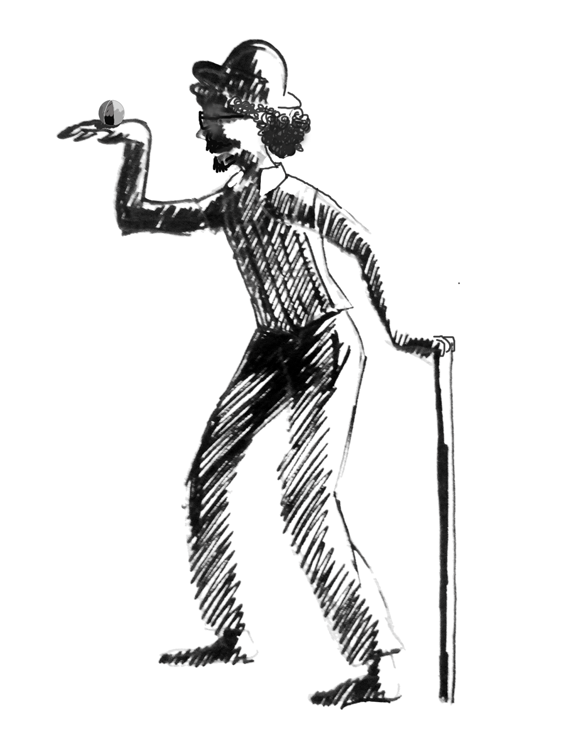
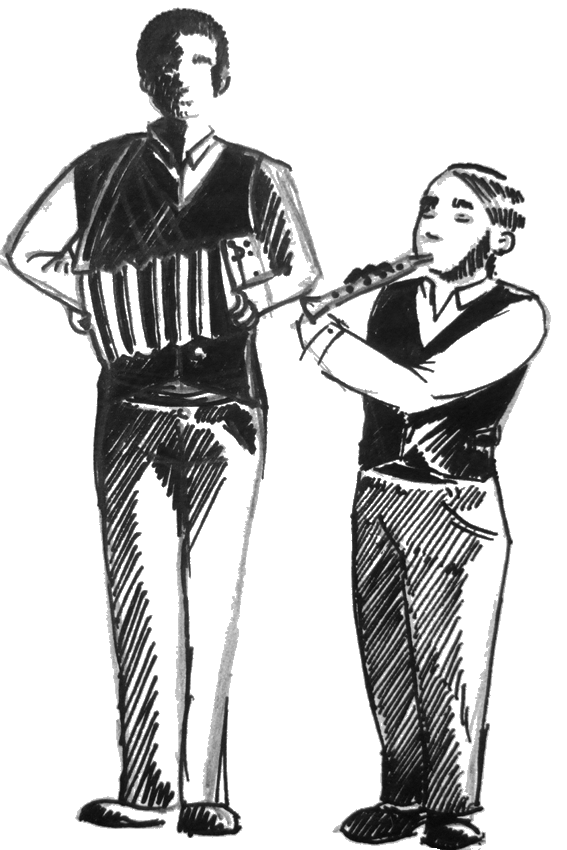
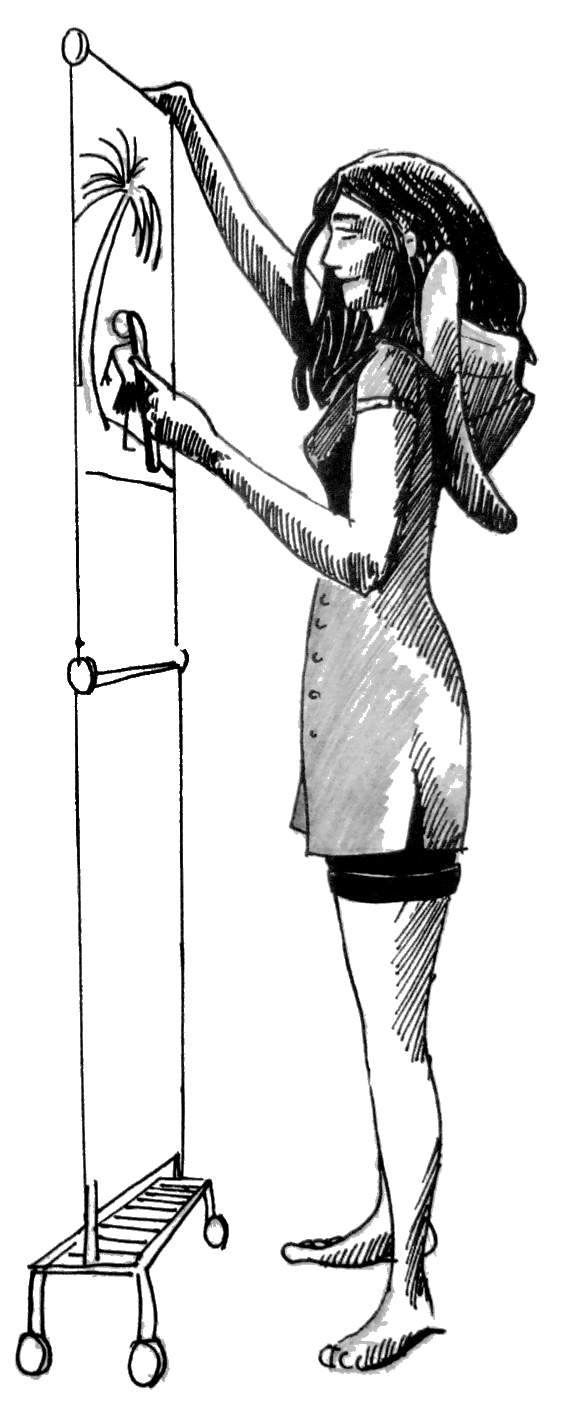


ERRANCE EN AÉA